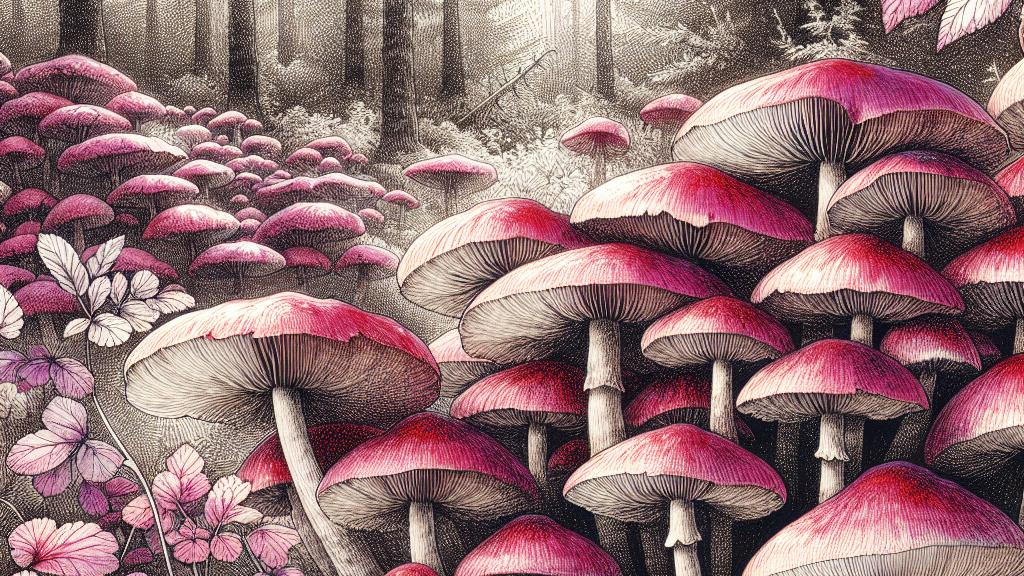Exploring the Safety of Dyes from a Fungal Source
Overview
- Recent studies show that yellow dyes from Cortinarius sanguineus might pose serious health risks.
- In stark contrast, the red dye known as dermorubin emerges as a safer option.
- We must remember that natural ingredients are not always safe; thorough investigation is key.

Introduction to Cortinarius sanguineus
Cortinarius sanguineus, unmistakably known as the bloodred webcap, is a mesmerizing fungus found thriving in the lush, temperate forests of Europe. This captivating mushroom isn't just a feast for the eyes with its vibrant crimson cap; it's also been sought after as a natural source of dye for textiles. But hold on! Before we dive headfirst into utilizing this vibrant fungus, we need to ask ourselves: What are the implications for our health? As we unravel this topic, let's keep an open mind yet remain cautious, understanding that while nature often provides, it can also present hidden dangers.
The Toxicity of Yellow Dye
A recent doctoral dissertation from the University of Eastern Finland uncovered alarming data regarding the yellow dye derived from this mushroom—emodin. Through rigorous laboratory tests, it was revealed that emodin not only induces mutations in bacterial cells but also triggers oxidative stress in human cells. Just imagine wearing a garment dyed with such a harmful substance; it's a scary thought! This crucial finding serves as a powerful reminder: even though these natural dyes may seem appealing as eco-friendly alternatives to synthetic dyes, we must not overlook their potential hazards. It's imperative to conduct extensive safety evaluations to protect consumers who desire sustainable fashion without compromising their health.
Safety of Red Dermorubin
On a more positive note, the studies highlight red dermorubin, another dye extracted from the bloodred webcap, as a safe option for textile use. In stark contrast to emodin, dermorubin exhibited negligible toxicity, showing that it could be beneficial for production. Regarding fashion, picture this: clothing that boasts a rich, eye-catching red hue without the hidden health risks lurking beneath! This newfound knowledge can inspire designers and manufacturers to create safer, more sustainable products. Consumers might find relief in the fact that they can wear natural colors while ensuring their health remains a priority.
The Bigger Picture
However, as we delve deeper into the world of natural dyes, we must remember that not all naturally sourced substances are safe. The contrasting toxicity levels of emodin and dermorubin highlight the complexity of natural compounds. Thus, we must tread carefully and place importance on exhaustive testing before integrating these dyes into mainstream textile practices. This thoughtful approach will ensure that as we celebrate natural beauty and sustainability in our wardrobes, we also safeguard our health and well-being. As we move toward a greener future, let's embrace the best of nature without turning a blind eye to its potential risks.

Loading...